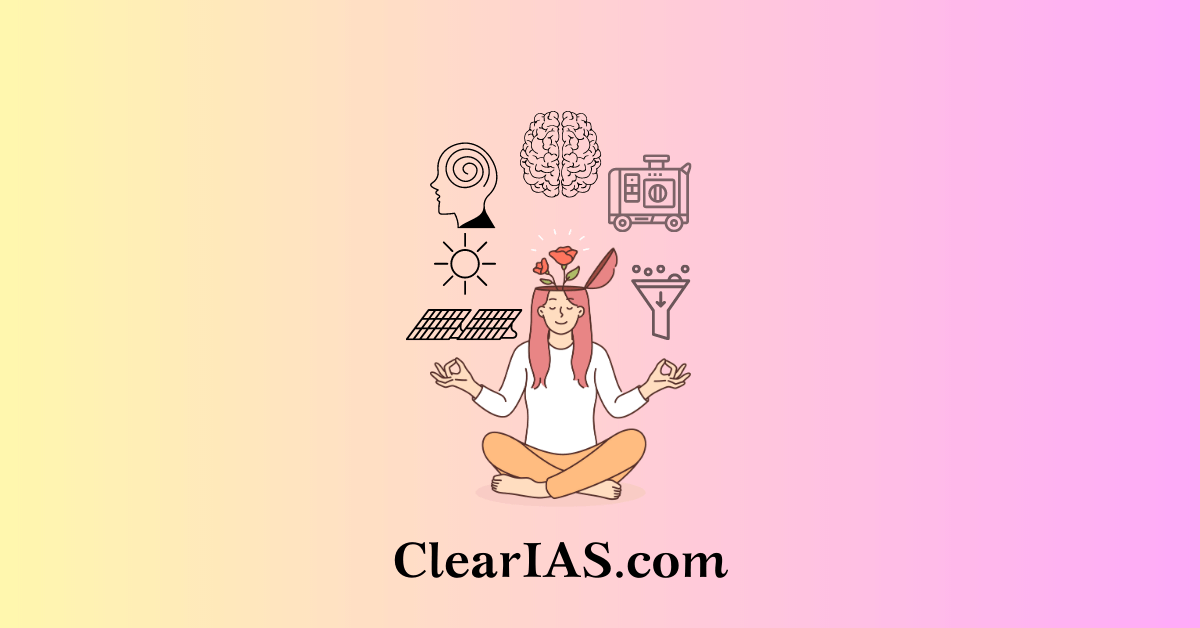
The General Mental Ability section of the CSAT is a litmus test for the cognitive capabilities of civil service aspirants.
It ensures that those who proceed to the next stages of the UPSC examination are not just knowledgeable but also possess the mental agility and analytical prowess required of a civil servant.
What is General Mental Ability (GMA)?
General Mental Ability (GMA) refers to the cognitive capabilities of an individual, including aspects like logical reasoning, problem-solving, numerical ability, and analytical thinking.
In the context of the UPSC CSE, GMA is designed to assess a candidate’s ability to interpret information, deduce conclusions, and make decisions based on given data or scenarios.
MCQ Examples of General Mental Ability
Mostly, General Mental Ability in UPSC CSE Prelims deals with pattern or image-based questions (the image-based questions are not prominent as per the latest trends).
1. Number Patterns:
Question: What comes next in the sequence: 2, 6, 12, 20, 30, …?
Solution: The pattern involves adding consecutive even numbers. 2 + 4 = 6 6 + 6 = 12 12 + 8 = 20 20 + 10 = 30 30 + 12 = 42
Answer: 42
2. Letter Patterns:
Question: What comes next in the sequence: A, C, F, J, O, …?
Solution: The pattern involves skipping an increasing number of letters. A (skip 1) C (skip 2) F (skip 3) J (skip 4) O (skip 5) U
Answer: U
3. Mixed Patterns:
Question: What comes next in the sequence: A2, C4, E8, G16, …?
Solution: The pattern involves alternating letters and doubling numbers. A (skip 1) C (double 2) 4 (skip 1) E (double 4) 8 (skip 1) G (double 8) 16 (skip 1) I (double 16) 32
Answer: I32
4. Word Patterns:
Question: If MOON is coded as NPPO, how is STAR coded?
Solution: The pattern involves increasing each letter by one. M -> N, O -> P, O -> P, N -> O So, S -> T, T -> U, A -> B, R -> S
Answer: TUBS
5. Shape Patterns (Descriptive):
Question: In a sequence of shapes, the first shape is a square, the second is a triangle on top of a square, the third is two triangles on top of a square, and so on. If this pattern continues, how many triangles will be on top of the square in the fifth shape?
Solution: The pattern involves adding one triangle for each subsequent shape. 1st shape: 0 triangles 2nd shape: 1 triangle 3rd shape: 2 triangles 4th shape: 3 triangles 5th shape: 4 triangles
Answer: 4 triangles
These questions test your ability to identify patterns and sequences in numbers, letters, words, and descriptions. Regular practice with different types of pattern-based questions can significantly improve one’s analytical and reasoning skills.
How to study General Mental Ability for CSAT?
Students may note that this article on General Mental Ability is just an overview of the topic. There is a lot more to learn about General Mental Ability in the CSAT paper.
We recommend the below sources to learn the subject.
- Join the ClearIAS CSAT Course.
- Join ClearIAS Prelims Test Series.
- Join ClearIAS Prelims cum Mains Course.
- Go through ClearIAS YouTube Classes on CSAT.
- Read books on CSAT.
Tips for Preparing for GMA in UPSC CSE
- Practice Regularly: The more you practice, the better you get. Regular practice helps in improving speed and accuracy.
- Understand the Basics: Before jumping into complex problems, ensure that you have a strong grasp of the basics of logical reasoning, numerical ability, etc.
- Solve Previous Year Papers: This will give you an idea of the type of questions asked and the level of difficulty.
- Stay Calm and Composed: During the exam, it’s essential to stay calm and composed. If you get stuck on a question, move on and come back to it later.
Also read: CSAT Course: UPSC Prelims Paper 2 Program
Conclusion
In conclusion, General Mental Ability is an integral part of the UPSC CSE and requires consistent practice and preparation. With dedication and the right strategy, one can ace this section and move a step closer to becoming a civil servant.





Leave a Reply